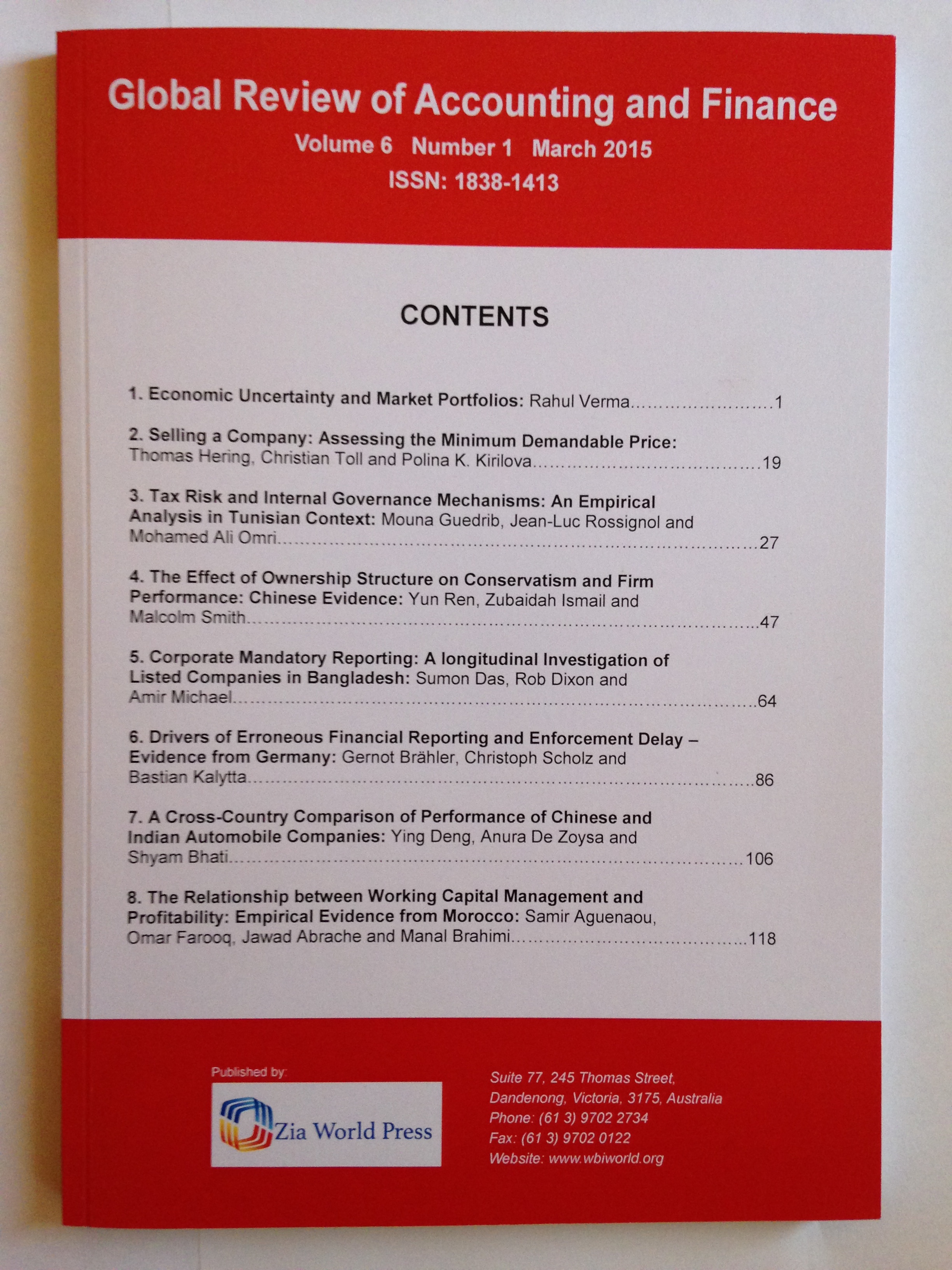Pages
52 – 75
The objectives of this study are to: explore the stage and/or level of adoption of some recent cost management tools among Jordanian manufacturing companies in the year 2010; to identify the major difficulties or obstacles facing the adoption attempts of such tools; and to examine the perceived effect of adoption level on company’s operating efficiency, relations with customers, relations with employees, accounting performance and market performance. Because Jordanian manufacturing companies do not reveal, in their annual reports, adequate information about their awareness and level of adoption of such tools, the authors had to design a questionnaire to collect the relevant data from key financial personnel in those corporations. The findings of the study, based on forty two responses from thirty companies, confirm the presence of a reasonable level of awareness and adoption, fully or partially, of each of the following four tools in order of intensity: JIT manufacturing; Balanced Scorecard, JIT inventory; Activity-Based Costing; and to a less extent Target Costing and Kaizen Costing tools. The findings also indicate that when considering adoption, the tool that faces the greatest difficulty is Target Costing followed by Activity-Based Costing. As to the nature of difficulties facing firm’s adoption of those tools, it was found that the high cost of implementation is the most prevailing difficulty followed by the lack of specialists in application and lack of employees' participation. Furthermore, the respondents believe there will be a positive effect of applying the tools on corporate operating efficiency, relations with customers and employees and on accounting and market performance. In conclusion it seems possible to apply most of the tools in the overall interest of the company if top management commit itself to eliminating or alleviating the difficulties facing adoption.

